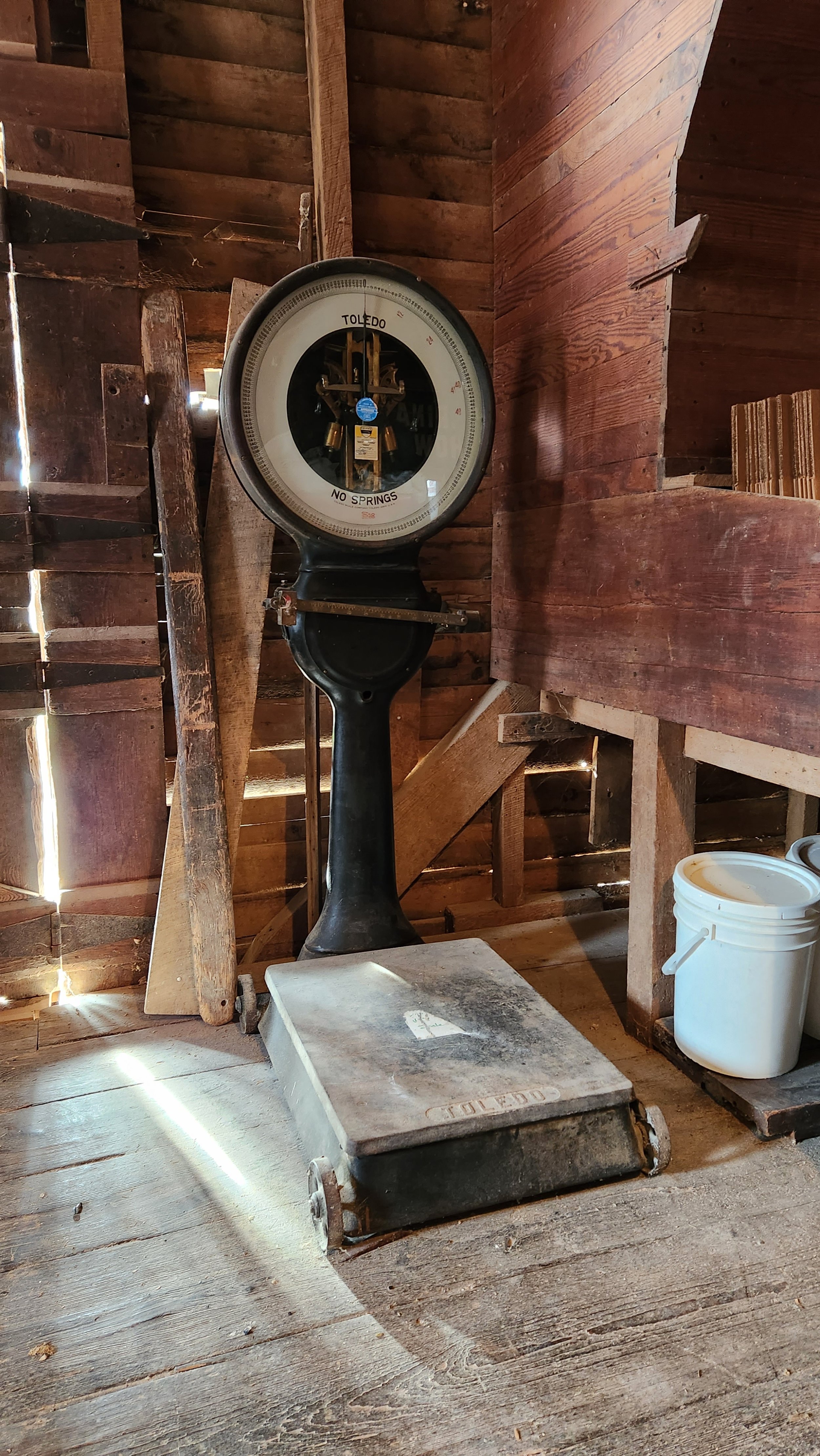
Mill History
Woodson’s Mill has a long and varied history that starts in 1794 when the mill was built.
1794
Mill built by Guiliford Campbell (popular knowledge)
Original portion of the mill, which currently houses the stone wheels, was 32’ x 32’
1834
Descendants of Guiliford Campbell, George & Polly Campbell inherit the mill then sell it to Joseph Fulcher for $1500.50
During Fulcher’s ownership, the building was extended to the west by 14 ft/all four stories
Two story ell to the west was most likely added during the above time frame
Small ell to the rear was also added sometime during his ownership
Upgrades to the mill operation during this time include:
Bucket elevators, powered by the water wheel, which consist of six square wooden shafts that extend underneath the floor to just under the ridge roof, a distance of approximately 60 ft
1863
Nathan C. Taliaferro purchased mill for $15,000
1875
Edward & Lucy Pettit purchased mill for $8,000
1885
The mill, known by then as Piney River Mill, was taken in trust for payment of debts due from Edward Pettit
1886
The Pettits pass the Piney River Mill and 57 ½ acres to Samuel Griggs in exchange for 516 ⅔ acres in Bedford County PLUS $1,000
1900
Dr. Julian B. Woodson purchased mill for $2,100
During Woodson’s ownership a one-story shed roofed wing was added on the rear of the building to house a cider press (which would later produce whiskey during the Depression and Prohibition)
In the early 1900’s Edd Willis, who owed Dr. Woodson a debt, was hired to repay that debt. Willis worked at the mill and served as Head Miller for the remainder of his life
Three acre Mill pond constructed in the 1920s’
Arts & Crafts style bungalow built in 1929
In addition to the mill, Dr. Woodson owned a 3000 tree apple orchard, a cidery, a 650 acre farm, a machine shop, a foundry, a saw mill, and an ice plant (remains of which still stand to the east of the water wheel)
In the early 1900s Woodson added roller mills for processing white flour, which was finer than the stone ground product produced with the millstones
Additional machinery added by Woodson included a scourer, a mechanized packing machine, a Toledo scale (which is still used today), a beam scale, a separator, scalping and bolting machines
Due to Dr. Woodson’s business savvy and community influence, the Piney River Mill is now known as Woodson’s Mill
1966
Huron Campbell purchased for an unknown price
1983
J. Gill Brockenbrough Jr. purchased mill
Brockenbrough spends the next few years restoring the mill
Steve Roberts is hired as head miller
1992
Woodson’s Mill is added to the National Registry of Historic Places
2012
Will Brockenbrough purchased mill through his father’s estate
Mill operation begins again as Woodson’s Mill reopens with the re-hiring of Steve Roberts as head miller
2020
Deep Roots Milling begins milling at Woodson’s Mill
2021
William & Charlene Chinworth purchased mill
The Chinworth’s, not millers by trade, have deep respect for the history of Woodson’s Mill, and their hope is to steward it well into the 21st century. By doing so, it’s history can continue to be discovered and enjoyed by the next generation and beyond
Woodson’s Mill 2023







